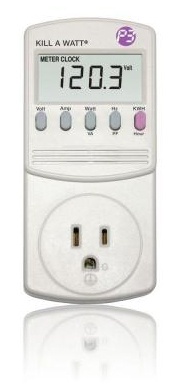Your Energy
Energy Resource Center
Tri-County EMC's Energy Resource Center (ERC) houses valuable information on energy efficiency, cost savings, and smart energy usage. Explore tools, tips, and insights to better understand your energy consumption and make informed decisions. The ERC enables members to take control of their energy usage, resulting in greater savings and a more sustainable future.
ENERGY SAVINGS TIPS
Maintain air filters and HVAC equipment.
Well-maintained equipment runs more efficiently, so replace or clean filters as needed. Units that are overcharged or have low coolant levels will ultimately cost you more. Be sure to have your air conditioning unit serviced every 1-2 years.
Set your thermostat for efficiency.
The smaller the difference between the indoor and outdoor temperatures, the lower your overall heating or cooling bill will be. Setting your thermostat at the recommended temperature of 78°F instead of 72°F can save 6-18% on your cooling bill. For cold temperatures, set your heat at 68°F.
Install a programmable thermostat.
A programmable thermostat allows you to set different temperatures for different periods throughout the day. Once you program it, you won’t have to touch it again. The thermostat automatically resets according to your instructions.
Plant trees and shrubs for shade.
A good landscaping plan can do wonders. For instance, properly placed trees around the house can save you between $100 and $250 annually on your electric bill. Plant deciduous trees that will grow high, spreading their branches over the south side of your house. On the west side, plant trees with lower crowns to block the afternoon sun.
Mind your drapes.
Keep your blinds, shades and curtains closed on the south and west-facing windows during the day to block the heat of direct sunlight during warmer months. In cold months, open these drapes to add the heat from the sun to your home.
Stop conditioned air from escaping.
Add weather-stripping on doors and windows, and caulk the cracks to keep conditioned air inside and outdoor air from leaking into your home.
Properly insulate your attic.
Install recommended levels of insulation to lower heating and cooling costs. On warm days, attic temperatures can get up to 140°F.
Install ceiling fans.
A ceiling fan can make a room feel 6 or 7 degrees cooler while using less energy than a 100-watt light bulb. Remember to run fans only when people are present in the room; ceiling fans cool people, not the air.
Go oven-less at meal time.
Grill outside when possible in warmer months. When you need to prepare small portions of food, use the microwave, toaster or a counter-top grill, all of which use less energy than a full-sized oven.
Close fireplace dampers in the winter.
After extinguishing the fire in your fireplace, be sure to close the damper. Leaving the damper open creates a path for warm air to escape from your home.
Use energy efficient bulbs.
Lighting accounts for approximately 13% of the average household’s electricity bill. Using energy-efficient light bulbs, like CFLs and LEDs, will help save energy throughout the year.
Avoid costly space heaters.
Using space heaters to temper the air in a bathroom for a short period may be a good option, but using them to heat the entire house will cost more than using a heat pump. The amount of energy you would use to run two space heaters could power a central heat pump large enough to heat an 1,800 sq. ft. home.
Wash clothes in cold water.
40% of the energy used in washing comes from heating the water. Washing clothes in cold water can help keep your clothes clean at a lower cost.
ENERGY MONITOR
Electricity usage monitors are available for members. The Kill A Watt energy usage monitor allows you to reduce your energy costs by identifying the appliances or electric devices that use the most energy. By plugging an appliance into the Kill A Watt, it will assess how efficiently the unit operates. The LCD screen will display the exact amount of kWh of electricity being used.
Tri-County members can borrow a Kill A Watt monitor from the cooperative for 30 days at no charge. If, at the end of the 30 days, the unit is not returned, the member will be charged $19.95 plus tax for the cost of the device. Members can also purchase the device for that same price. For more information, please contact Tri-County EMC.
.png)